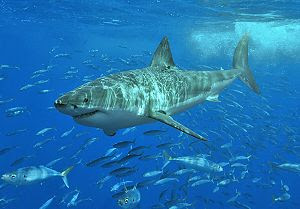Corvus splendens
The house crow is a widespread resident of India and has a special place in Hindu society. During death ceremonies (shraddha) and Pitru Paksha, the practice of offering food or pinda to crows is still in vogue since crows are believed to represent our ancestors.
The House Crow, also known as the Colombo Crow is a common bird of the Crow family that is of Asian origin but now found in many parts of the world, where they arrived assisted by shipping. It is between the Jackdaw and the Carrion Crow in size (40 cm in length) but is relatively slimmer than either. The forehead, crown, throat and upper breast are a richly glossed black, whilst the neck and breast are a lighter grey-brown in colour. The wings, tail and legs are black. There are regional variations in the thickness of the bill and the depth of colour in areas of the plumage.
Distribution and habitat
It has a widespread distribution in southern Asia, being native to Nepal, Bangladesh, India, Pakistan, Sri Lanka, Maldives and Laccadive Islands, South West Thailand and coastal southern Iran. It has been introduced to East Africa around Zanzibar (around 1897[3]) and Port Sudan, and arrived in Australia via ship but has up to now been exterminated. Recently it has made its arrival in Europe, and has been breeding in the Hook of Holland since 1998. It is associated with human settlements in all of its range, from small villages to large cities.
Due to a human population explosion in the areas it inhabits, this species has also proportionately multiplied. Being an omnivorous scavenger has enabled it to thrive in such circumstances.
Identification: Plumage is glossy black, except for the nape, sides of the head, upper back and breast, which are grey. Bill, legs, and feet also black. Sexes alike.
Food: Omnivorous. Diet includes seeds, fruit, grain, nectar, berries, bird’s eggs, nestlings, mammals, reptiles, amphibians, fish, insects, wide range of carrion.It is a highly opportunistic bird and given its omnivorus diet, it can survive on anything that is edible.
Call: Normal call a harsh qua qua or a nasal kaan kaan. It also has a couple of softer calls when resting or during courtship.
Habits: Highly vocal, gregarious birds, seemingly unafraid of humans. Aggressive, will attack and chase off any large bird of prey. Birds have been reported taking food from school children and killing chicks of domestic fowls. Breeding pairs will repeatedly dive bomb humans near the nest.
Habitat: Wholly dependent on human habitation; consequently found in villages, towns, and cities throughout its range. Resorts to altitudinal and seasonal local movements in colder northern areas in winter. Replaced by Large-billed Crows and Jungle Crows in mountains and forests respectively.
Breeding: Solitary nester except in areas of high population density. Will use trees, buildings, or other artificial structures for rough stick nest lined with coir or other fibre. Four to five pale blue-green eggs, speckled with brown. Breeding season March through July. Incubation 16–17 days; fledging 21–28 days.
Status: Not threatened. Abundant in its range to the point of being a pest and a threat to other bird species.
For some of my articles visit:
http://mohanpaiblogger.blogspot.com/
http://mohanpaisarticles.blogspot.com/
http://biodiversity-mohanpai.blogspot.com/
For some key chapters from my book "The Western Ghats", please log on to:
http://westernghats-paimohan.blogspot.com/
For detailed blog (6 Chapters from my book) on Mahadayi/Mandovi River Valley, please log on to:
http://mohan-pai.blogspot.com/
For the book 'The Elderly' please log on to:
http://omashram.sulekha.com/blog/posts.htm
http://oldagecare-paimohan.blogspot.com/
You can also access my blogs on Sulekha and Wordpress
http://mohanpai.wordpress.com/
http://mohanpai.sulekha.com/blog/posts.htm
For my book "The Flight of Gods - Hindu Temples & Shrines of Goa" please log on to:
http://flightofgods.sulekha.com/blog/posts.htm
http://flightofgods.blogspot.com/
For “Miscellany” log on to:
http://paimohan-mohanpai.blogspot.com/
(Traditional Hindu Central Courtyard Houses of Goa)







 Followers of Vishnu believe the conch shell was given to us to destroy all evil. Arjuna, the hero of India's epic Mahabharata, blew a particularly powerful conch as a battle horn.
Followers of Vishnu believe the conch shell was given to us to destroy all evil. Arjuna, the hero of India's epic Mahabharata, blew a particularly powerful conch as a battle horn.











